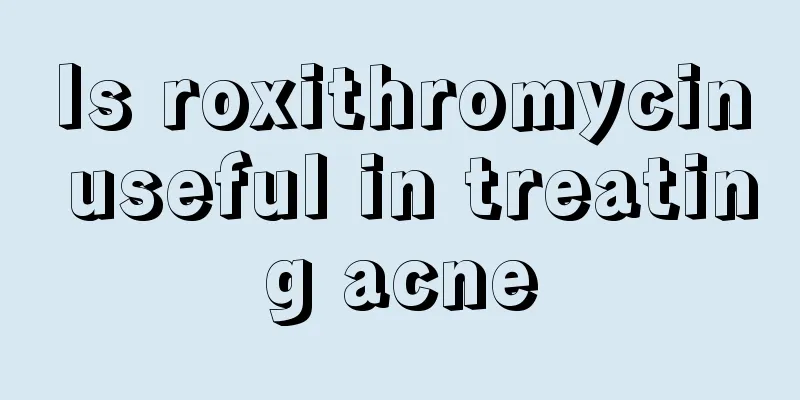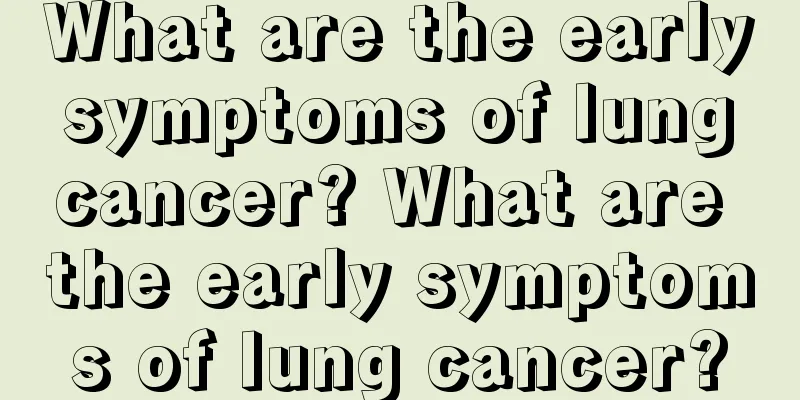Is roxithromycin useful in treating acne

|
Roxithromycin is an anti-inflammatory drug, and many people think that it can also treat acne. Acne is a type of acne. Roxithromycin can only have an anti-inflammatory effect on acne. Generally speaking, roxithromycin cannot completely cure acne. 1. Roxithromycin can be used to treat inflammatory acne The occurrence of acne is closely related to factors such as excessive sebum secretion, blockage of the sebaceous gland ducts of the hair follicles, bacterial infection and inflammatory response. After entering puberty, the level of androgens, especially testosterone, in the human body increases rapidly, promoting the development of sebaceous glands and producing a large amount of sebum. At the same time, abnormal keratinization of the sebaceous gland ducts of the hair follicles causes blockage of the ducts, hindering the excretion of sebum and forming keratin plugs, also known as micro-acne. Various microorganisms, especially Propionibacterium acnes, multiply in large numbers in the hair follicles. The lipase produced by Propionibacterium acnes breaks down sebum to produce free fatty acids, while also attracting inflammatory cells and mediators, ultimately inducing and aggravating the inflammatory response. 2. Roxithromycin can be used to treat moderate to severe acne The non-inflammatory skin lesions of acne manifest as open and closed comedones, which further develop into various inflammatory skin lesions. Inflammatory skin lesions have a variety of manifestations: papules, pustules, nodules and cysts. The lesions are most common on the cheeks, forehead and nasolabial folds, followed by the chest, back and shoulders. Inflammatory papules are red and vary in diameter from 1 to 5 mm; pustules are uniform in size and filled with white pus; nodules are larger than 5 mm in diameter and feel hard and painful to the touch; cysts are located deeper and are filled with a mixture of pus and blood. These lesions may also fuse to form large inflammatory plaques and sinus tracts. After the inflammatory skin lesions subside, pigmentation, persistent erythema, and depressed or hypertrophic scars are often left behind. 3. Oral dosage form of roxithromycin for the treatment of acne A study analyzed the efficacy and safety of roxithromycin sustained-release tablets and roxithromycin capsules in the treatment of acne. Methods The treatment group took 300 mg of roxithromycin sustained-release tablets orally, once a day; the control group took 300 mg of roxithromycin capsules orally, once a day; both groups of patients applied compound sulfur lotion to the affected area, twice a day. Results The effective rate was 68.5% in the treatment group and 60.3% in the control group. There was no significant difference in the total effective rate between the two groups (P>0.05). The incidence of adverse reactions was 17.9% in the treatment group and 33.3% in the control group. There was a significant difference between the two groups (P < 0.05). Conclusion Roxithromycin is effective in treating acne, but the sustained-release tablets have fewer side effects and are easy to take. |
<<: Detailed explanation of how to get molluscum contagiosum
>>: What are the treatments for rosacea
Recommend
Moxibustion on this magical point can help oral ulcers heal quickly!
Many people have suffered from oral ulcers. Those...
Which hospital is reliable for treating teratoma
There is an oncology department in any regular me...
Is lumbar transverse process fracture serious?
The treatment methods for fractures in different ...
Precautions in fibroid tumor care
There are many clinical diseases that are divided...
How to kill bacteria when cooking snails
Snails are a kind of freshwater creatures, and ma...
Will I definitely not have my period if I'm pregnant?
We all know that a woman's body will undergo ...
Daily methods to remove oil stains from clothes
Many women have a worry when washing clothes, the...
How to reduce swelling in eyes after crying? There are 9 tips to reduce swelling
We all know that it is easy for the eyes to swell...
What are the magical uses of vinegar
Vinegar is not just a condiment, it has many wond...
How to reduce lip hair
Beard is the main symbol of masculinity. If a man...
This detoxification can eradicate the root cause of cancer
Dr. Ernst, a leading German sports medicine exper...
How much does it cost to treat small cell lung cancer
How much does it cost to treat small cell lung ca...
How to clean tea sets_Tea set cleaning methods
Everyone knows that after using tea sets frequent...
How to treat lung cancer? It is recommended to use 4 methods to treat lung cancer
Lung cancer is a malignant tumor and is also a re...
What is the sign of frequent nosebleeds
Nosebleeds are a very common phenomenon. Most peo...









